The paper presents a fresh linear barcode scanning system based on hybrid template matching scheme. In current area, charge coupled device based scanning skills are not talented of handling motion blur image and trust severely on camera systems for capturing good quality, well focused barcode images which are due to the lack of selfcontrolled and proficient mechanisms. The proposed system is capable of understanding barcodes from low- resolution images containing severe motion blur and works totally in the dimensional domain. The proposed system also uses image blur estimation scheme for retrieving the severe motion blur in barcode images. We first estimate a lowdimensional approximation to the PSF by using some parts of clean barcode that are known by construction. This lowdim representation only involves a few parameters, which can be iteratively computed via the Levenberg-Marquardt (LM) algorithm. Polynomial interpolations are obtained in the rest of the PSF. A focused graphical model is designed to characterize the relationship between the blurred barcode waveform and its corresponding symbol value at any specific blur level. A hybrid programming-based inference algorithm is designed to regain the optimal state series, enabling synchronized decoding on mobile devices of limited processing power.
Keywords |
| Hybrid template matching scheme, Levenberg-Marquardt (LM) algorithm, A focused graphical model,
Hybrid programming-based inference algorithm. |
INTRODUCTION |
| A barcode is an optical machine-readable representation of data which is labeled on products. It is confidential
as 1D or linear barcode and 2D barcode. Barcodes represent data by unstable the widths and spacing of parallel lines,
and may be stated as linear or one-dimensional (1D). Afterward they evolved into rectangles, hexagons, square, dots,
and other geometric patterns in two dimensions (2D) barcode. |
| Since its invention in the 1940s and early commercial implementation in retail industry in the 1970s, barcode
technology has established its applications in many industries and has been playing an important role in people’s daily
life. Multiple generations of barcode scanning systems ranging from earlier laser scanners to more modern area Charge-
Coupled Device (CCD) scanners have been invented and developed. As the location/size data of bars and spaces is of
principal importance for deciphering information implanted in barcodes, current barcode scanning systems normally
request well-focused barcode signals, which contribution in the recovery of location/size-related features by confining
the edge interaction between the code patterns. |
| Depth-of-field (DOF), the range of distance at which the scanned symbol is sufficiently in focus to be read
without error which is an important feature of any detailed barcode scanning system. Area CCD scanners have the
benefit of reading both linear and 2D barcodes, but they have less DOF than that of laser scanners, because the
directional and clear nature of laser light permits protracted DOF. This DOF constriction has broken the availability of
area CCD scanners on various occasions. |
| For example, linear barcode scanning based services are largely not available on mobile devices with fixedfocus
lenses because the barcode images capturedby these devices containexcess edge interactionstriggeredby out-offocus(
OOF) blur,which cannot be handledby current techniques. Fig. 1 shows an example of linear barcode and the
comparison between the ideal waveform segment and the OOF blur deformed waveform segment. |
| To provide better DOF, dedicated area CCD scanners usually employ special hardware configurations such as
a combination of large f-number (focal length divided by aperture diameter) and high-density light sources [1], autofocus
device [1], a lens assemblage with lenses of different focus ranges [2], and a multi-focal lens or lenses [3], adding
to the complexity and cost of the system. Nevertheless, image blur is essentially inevitable in practical situations.
Therefore, apart from implementing special hardware to improve barcode signals, signal processing and analysis
approaches should also be resorted to increase the robustness of barcode scanning systems towards image blur. |
RELATED WORK |
| In this paper [4], the author preset a novel approach to detection of one dimensional bar code images. The
algorithm is mainly designed to categorize barcodes, where the image may be of low perseverance, low value or
undergo from considerable blurring, de-focusing, non-uniform clarification, noise and color dispersion. The algorithm
is accurate, fast, and scalable and can be easily adjusted to search for a valid result within a specified time constraint.
The algorithm is particulary useful for real-time recognition of barcodes in portable hand-held devices with limited
handling ability, such as mobile phones.In the paper[5], barcode rebuilding contains recovering a clean signal from an
observed one that is corrupted by convolution with a kernel and additive noise. The precise form of the convolution
kernel is also unknown, making reconstruction tougher than in the case of standard deblurring. On the other hand, bar
codes are functions that have a very special form—this makes reconstruction feasible. The author [5] develops and
analyzes a total variation based variational model for the solution of this problem. This new system models analytically
the interaction of neighboring bars in the bar code under convolution with a kernel, as well as the estimation of the
unknown parameters of the kernel from global information contained in the observed signal. |
| In the paper [6], the existing open-source libraries for 1-D barcodes recognition are not able to recognize the
codes from images acquired using simple devices without autofocus or macro function. The author present an advance
of an existing algorithm for recognizing 1-D barcodes using camera phones with and without autofocus in this
justification. The multilayer feed advancing neural network based on back propagation algorithm is used for image reestablishment
in order to improve the desired algorithm. Presentations of the proposed algorithm were compared with
those obtained from available open-source libraries. The results show that our method makes probable the decoding of
barcodes from images captured by mobile phones without autofocus. |
| In this paper [7], Camera cell phones have become everywhere in the world, thus opening an overload of
opportunities for mobile vision applications. For example, they can allow users to admittance reviews or price
comparisons for a product from an image of its barcode while motionless in the store. Barcode reading needs to be
strong to testing setting such as blur, clamor, low resolution, or low value camera lenses, all of which are exceedingly
common. Surprisingly, even state-of-the-art barcode reading algorithms not succeed when some of these factors come
into play. One cause resides in the early pledge strategy that nearly all existing algorithms adopt: the image is first
binarized and then only the double data is processed. |
| This project proposes a new approach to barcode decoding that bypasses Binarization. This technique relies on
deformable templates and exploits all the gray level information of each pixel. Due to the parameterization of these
templates, this project can proficiently perform maximum possibility estimation separately on each digit and enforce
spatial coherence in a subsequent step. |
| This technique shows by way of experiments on challenging UPC-A barcode images from five different
databases that our approach outperforms challenging algorithms. Implemented on a Nokia N95 phone, an algorithm can
restrict and make out a barcode on a VGA image (640_480, JPEG compressed) in an average time of 400-500ms. |
THE PROPOSED SYSTEM |
| Image restoration from out-of-focus (OOF) blur is a very hard problem, as one has to gather both the original
image and the point-spread function (PSF) from the data. We struggle to solve this OOF declaring problem in the
application of barcode reconstruction. We propose a partially blind method to improve binary barcode. It is based on an
image formation model for out-of-focus blur. We first estimate a low-dimensional approximation to the PSF by using
some parts of clean barcode that are known by construction. This low-dim illustration only includes a few parameters,
which can be iteratively computed via the Levenberg-Marquardt (LM) algorithm. The rest of the PSF is obtained by
polynomial interruptions. Next, image deblurring is achieved by explaining the least-square (LS) solution with box
restriction. We additional take the least bar width into account, which matches to a extending matrix or an up-sampling
operator. Having this conditions in the LS term basically enhances the efficiency of image declaring which is shown in
Fig.1. |
| The aim of any image restoration techniques is to recover the original image from the corrupted observation.
One of the most general degradation phenomena in images is motion blur. In case of blind image restitution, exact
judgment of motion blur parameters is required for deblurring of such images. This paper estimated an original
technique for estimating the parameters of uniform motion blur using ridgelet transform. Originally, the power of
ridgelet coefficients is used to estimate the blur angle and then blur length is estimated using a radial basis function
neural network. This work is experienced on special barcode images with varying parameters of blur. The simulation
result demonstrates that the proposed method improves the restoration performance. |
| In the Image deblurring algorithm, the approach offered in this paper, a given blurred barcode image is
analyzed to find out the angle and length of the motion blur. The blur is modeled with the assist of these two motion
blur parameters. The blurring process can be viewed as a linear complication of the original image with that blur
kernel; and it can be removed by reversing this operation. |
| First of all in a preprocessing step, a blurred image is resized to 256 x 256 to reduce the computation cost, and
then a RGB image to the grayscale conversion is performed. the blur direction is determined by performing a Ridgelet
transform on the logarithmic power spectrum of the Hann windowed barcode image. The blur length is estimated using
RBFNN as features and as regression tool with energy of ridgelet coefficients. In the last step as explained in detail that
the PSF is calculated and Lucy-Richardson algorithm is applied to an overview of the motion de-blurring algorithm. |
ALGORITHM |
| The motion blur angle detection algorithm can be summarized as follows, |
| i. Preprocess the input blurred barcode image. |
| ii. Perform Hann Windowing over f(x,y) to remove boundary artifacts. |
| iii. Compute the Fourier transform which is F(U,V) of step2 image. |
| iv. Compute the log power spectrum of F(U,V) |
| v. For a set of angles ᶿ ═ {ᶿ1, ᶿ2,..., …, …,…., ᶿn},where ᶿiε[0,π] , with 1 degree spaced intervals, compute the
normalized Radon vectors at these angles. |
| vi. Apply a 4-level 1-D DWT on the Radon vectors to obtain the ridgelet coefficients. |
| vii. Find the sum of energies of ridgelet coefficient for vectors of each orientation. |
| viii. Find the maximum energy which is corresponding to motion blur angle. |
EXPERIMENTAL RESULT |
| The input blur image is shown in Fig.2. The input image is a barcode image which has severe motion blur which is
treated by using image blur estimation scheme. |
| The input blur image is converted in gray scale image and the gray scale image consists of black and white sections that
is shown in Fig.3 |
| After the conversion of input blur barcode image into grayscale image, then the grayscale image is converted into
gradient image to obtain the perfect segmented image which is shown in Fig.4. |
| When the blur level is less than or equal to one half of the total value then the scan line segmentation is done. The
deformed scanline is shown in Fig.5. |
| The deformed scanline waveform image is elaborated into deformed variable sequence, The deformed variable
sequence is shown in Fig.6. |
| The standard barcode waveform is generated by finding observation sequence from deformed scan line of original
image which is shown in fig.7. |
| The observation sequence obtained using specific the blur level is compared with the standard waveform which is
obtained from focussed or directed graphical model till the observation sequence most similar to standard waveform is
found which is shown in Fig.8. |
CONCLUSION AND FUTURE WORK |
| To conclude, the most notable contribution of this study is that it considered linear barcode scanning under the
perspective of deformed binary waveform analysis and classification and it proposed a disciplined and efficient
approach on classifying severely blurred binary waveforms. The performance of the proposed system can be further
improved by working on a few directions: find better barcode detection/localization schemes and image blur level
estimation schemes; design procedures on handling nonlinear distortions; investigate adaptive verification procedure
according to specific blur and noise; and generalize the line spread function model by considering issues such as lens
aberration, motion blur, etc. It should be noted that although the system proposed in this study. A barcode scanning, it
is equally applicable to other linear barcode symbologies given that the number of characters is fixed or can be
estimated. The whole system is currently implemented on camera phones, and similar methodology can be taken by
professional CCD imager or laser scanner to increase their operating range and reduce the cost of hardware by
removing the components specifically designed to extend the DOF. More commonly, under the outlook of deformed
binary waveform analysis, the methodology presented in this study has the potential to be adapted and applied to
camera-based text image analysis because image blur (especially OOF blur and moving blur) are very common in
document images captured by portable digital imaging devices. |
| |
Figures at a glance |
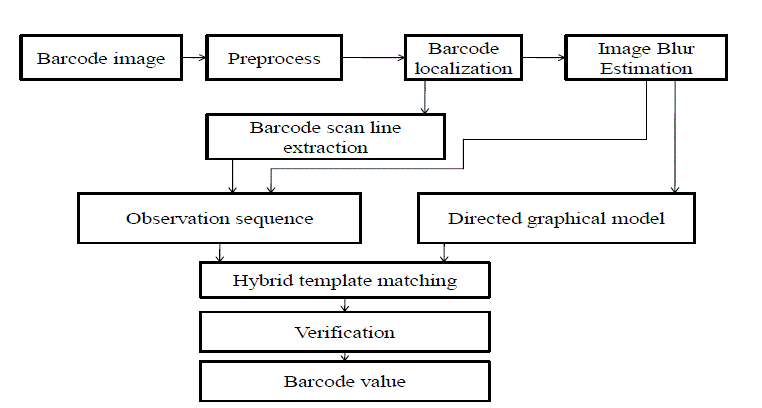 |
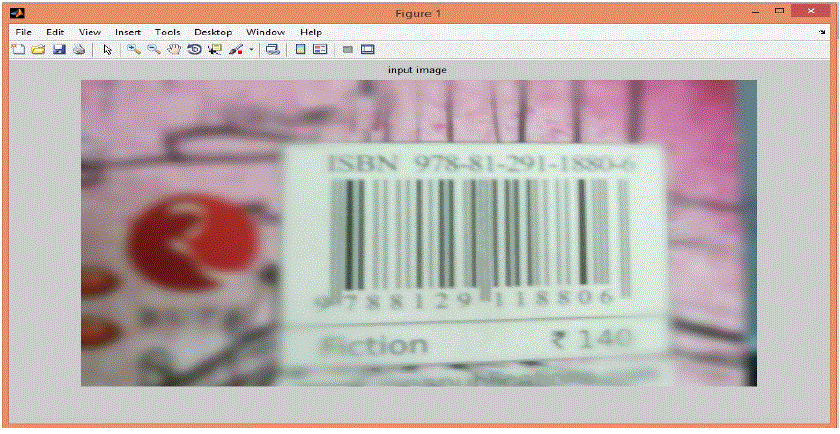 |
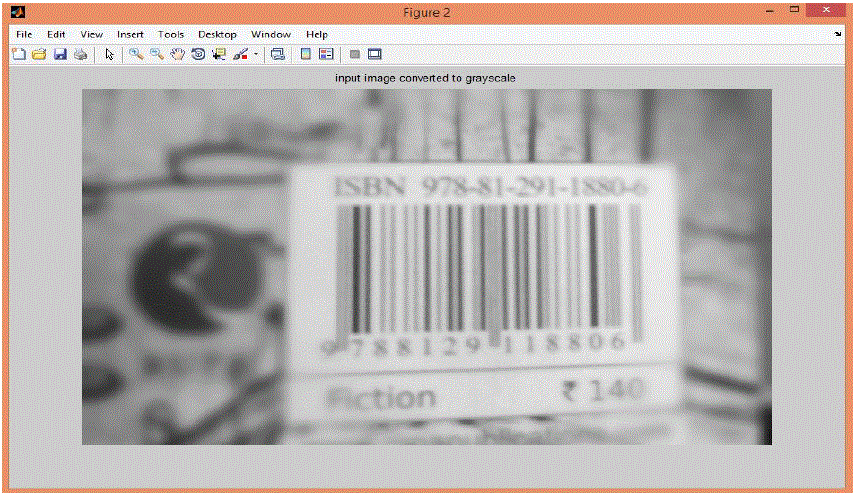 |
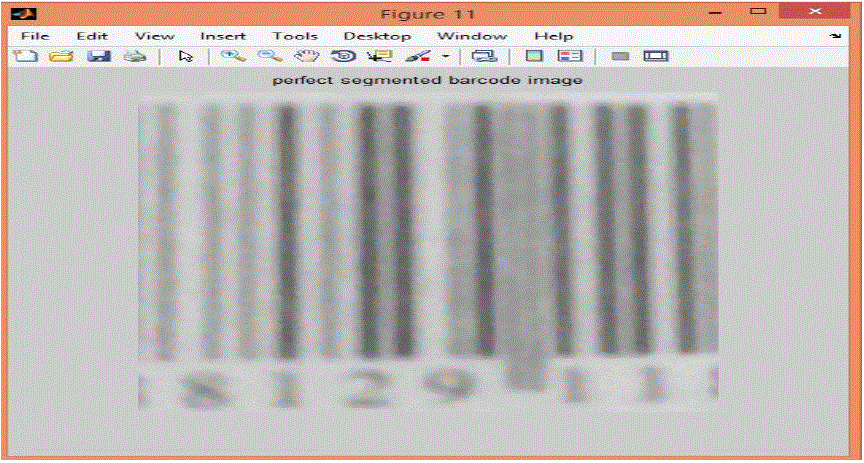 |
| Figure 1 |
Figure 2 |
Figure 3 |
Figure 4 |
|
| |
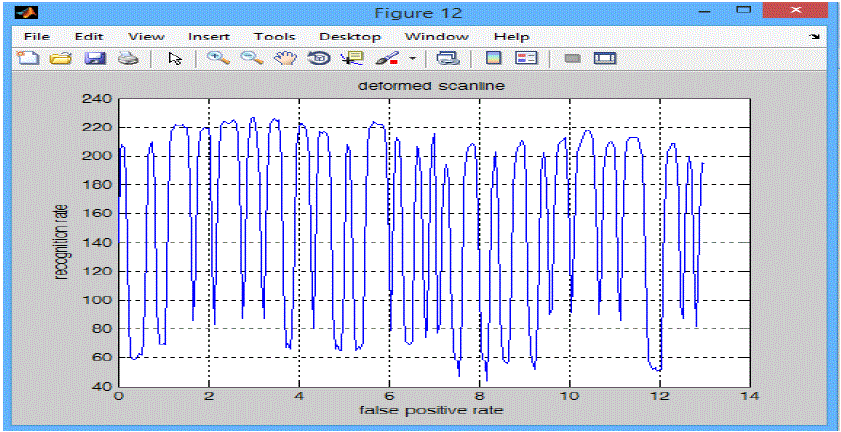 |
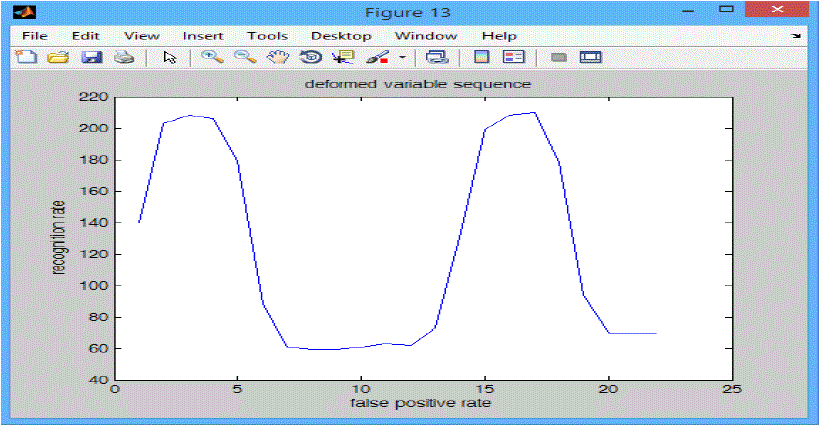 |
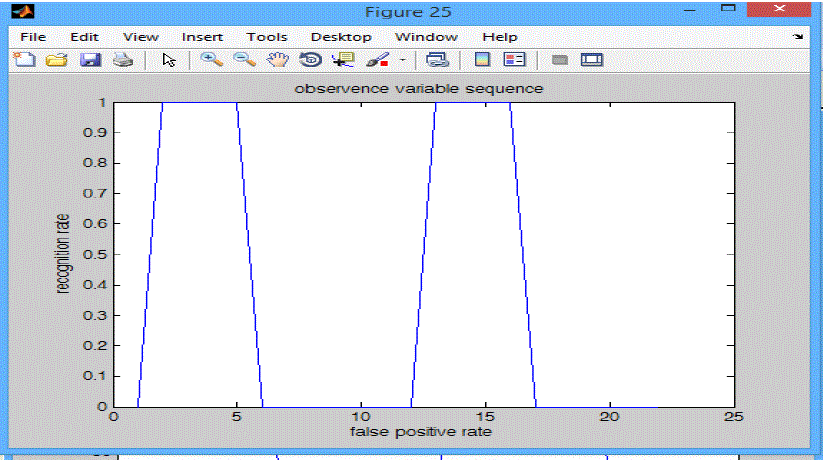 |
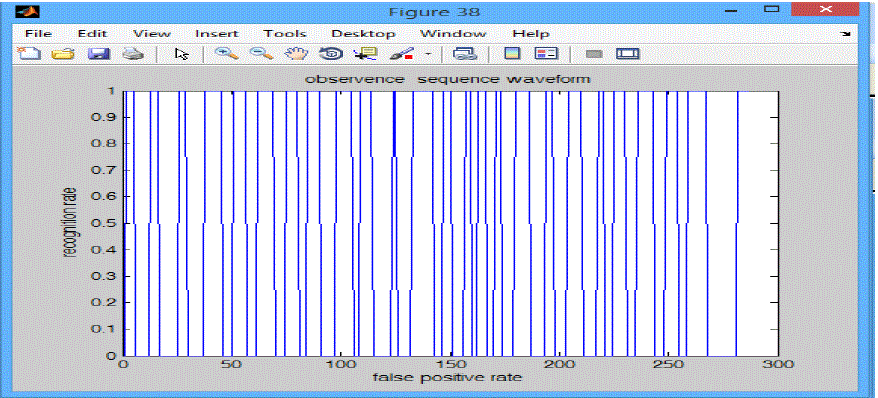 |
| Figure 5 |
Figure 6 |
Figure 7 |
Figure 8 |
|
| |
References |
- J. Massieu, ?Autofocus barcode scanner and the like employing micro-fluidic lens?, U.S. Patent 7296749, Nov. 20, 2007.
- T. Miwa and T. Matsushima, ?Bar code reading apparatus with multifocal length optical system?, U.S. Patent 5473149, Dec. 5, 1995.
- B. Olmsteadetzal, ?Image reader with multi-focus lens?, U.S. Patent 5814803, Sep. 29, 1998.
- R. Shams and P. Sadeghi, ?Bar code recognition in highly distorted and low resolution images?, in Proc. IEEE ICASSP, vol. 1. Apr.2007, pp. I- 737–I-740.
- Zamberletti, I. Gallo, M. Carullo, and E. Binaghi, ?Neural image restoration for decoding 1-D barcodes using common camera phones?, in Proc. 5th Int. Conf. Comput. Vision Theory and Appl., 2010, pp. 5–11.
- O. Gallo and R. Manduchi, ?Reading 1D barcodes with mobile phones using deformable templates?, IEEE Transaction Pattern Anal. Mach. Intell., vol. 33, no. 9, pp. 1834–1843, Sep. 2011.
- S. Esedoglu, ?Blind deconvolution of bar code signals?, Inverse Problems, vol. 20, no. 1, pp. 121–135, Feb. 2004.
- E. Joseph and T. Pavlidis, ?Bar code waveform recognition using peak locations?, IEEE Trans. Pattern Anal. Mach. Intell., vol. 16, no. 6, pp. 630–640, Jun. 1994.
- D. Kundur and D. Hatzinakos, ?Blind image deconvolution?, IEEE Signal Process. Mag., vol. 13, no. 3, pp. 43–63, May 1996.
- J. Liang, D. Doermann, and H. Li, ?Camera-based analysis of text and documents: A survey?, Int. J. Document Anal. Recognit, vol. 7, nos. 2–3, pp. 84–104, 2005.
|